The Mystery of Past Life
New developments shed interesting light on reincarnation
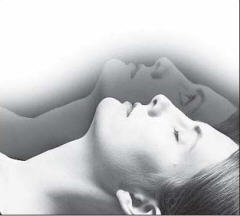
When Bollywood actor Lilliput went under hypnotic regression on the sets of hit TV serial, “Raaz Pichley Janam Ka,” he described how in past lives, his legs were cut either in accidents or trauma. The result he was born a dwarf in his present life.With many celebrities lining up for a session with Dr. Jain, the hypnotherapist on the show, the phenomenon of reincarnation is in the news again. Where on one side, rational societies in India have filed court cases to stop the telecast of “Raaz Pichle Janam ka”, calling it superstitious and unscientific, newer researches in various fields offer fresh perspective on the phenomenon. Even Time magazine ran a story on Near Death Experiences (NDE), a phenomenon often quoted by believers of reincarnation as scientific proof for reincarnation. Let’s see what is there for us:
Is There Life After Death?
Radiation oncologist Dr. Jeffrey Long argues that if you look at the scientific evidence, the answer is unequivocally ‘yes’. Drawing on a decade’s worth of research on near-death experiences work that includes cataloguing the stories of some 1,600 people who have gone through them he makes the case for that controversial conclusion in a new book, “Evidence of the Afterlife”. (TIME, Jan 22)
Medically speaking, what is a near-death experience?
A near-death experience has two components. The person has to be near death, which means physically compromised so severely that permanent death would occur if they did not improve: they’re unconscious, or often clinically dead, with an absence of heartbeat and breathing. The second component is that at the time they’re having a close brush with death, they have an experience a special state of consciousness, including a number of special elements such as pleasant feelings, seeing a tunnel, a light or deceased relatives, or experiencing a life review, or an out-of-body experience.
Medical fraternity is open about NDEs. On 15 December 2001, the highly respected international medical journal, The Lancet, published a 13-year study of NDEs observed in ten different Dutch hospitals. The author, Dr. Van Lommel, first became interested in NDEs after reading the first book about NDEs, Life After Life by American doctor Raymond Moody. In 1988, Van Lommel began a study that would encompass 344 survivors of cardiac arrest in 10 Dutch hospitals. 18% of subjects reported some recollection of the time of clinical death, and 7% an experience that qualified as a deep NDE.
NDE offers an important insight into consciousness. The current medical understanding is that consciousness is a function of the brain. However, the implication of NDEs is that consciousness is a function of some other organ or entity; perhaps outside of body. “In my view,” says Van Lommel, “the brain is not producing consciousness, but it enables us to experience our consciousness.”
He elaborates: “How could a clear consciousness outside one’s body be experienced at the moment the brain no longer functions during a period of clinical death with flat EEG? Furthermore, blind people have described veridical perception during out-of-body experiences at the time of NDEs. In our prospective study of patients that were clinically dead (flat EEG, showing no electrical activity in the cortex, and loss of brain stem function evidenced by fixed dilated pupils and absence of the gag reflex), the patients reported a clear consciousness, in which cognitive functioning, emotion, sense of identity, or memory from early childhood occurred, as well as perceptions from a position out and above their ‘dead’ body.”
Interestingly, another NDE researcher Dr. Kenneth Ring studied cases of NDE in completely blind experiencers and fifteen out of twenty-five cases immovably declared that during their NDE they had “visual experiences.” Ring labels this phenomenon of blind people being able to see as “mindsight.”
At the end of 2007 Van Lommel published a massive tome (in the Dutch language) called Endless Consciousness: A Scientific View on the Near-Death Experience. Currently, it appears high on the best sellers lists, which is remarkable for a book of this level of complexity. But then again, life after death is a subject that speaks to every one of us.
Facial Features
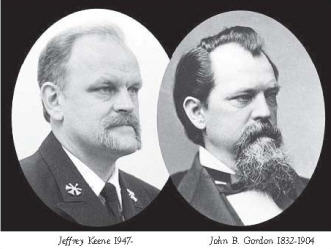
Some reincarnation cases demonstrate that facial features remain consistent from one lifetime to another. Take for instance Jeffrey Keene, a retired decorated fire fighter in, Connecticut, USA. In his book Someone Else’s Yesterday, Jeff describes how he retrieved memories of his lifetime as John B. Gordon, who commanded a regiment in the battle of Antietam in 1862 in American Civil war. In his book, Jeff describes habits and traits he has in common with Gordon, but what is most striking is the similar facial features, including scars on his body and face, that reflect Gordon’s battle wounds.
In Born Again by Walter Semkiw, the author proposes that people reincarnate in groups based on shared karma, emotional attachments, and joint projects. While investigating Jeff’s case, the author suspected that Jeff’s fellow firefighters could be likely military acquaintances of John B. Gordon. One of these proposed past life pairing, which demonstrates a striking similarity in physical resemblance, involves Confederate General Cadmus Wilcox and Firefighter Wayne R. Zaleta.
Another case of reincarnation with similar facial features is Dorothy Dandridge (1922-1965), an actress who was denied an Oscar, in part because she was a black woman in a prejudiced time. She reincarnated as Halle Berry (born in 1966) and won an Oscar for Best actress in 2002.
Creative Work

Reincarnation provides a very logical explanation for the phenomenon of child prodigies a soul that contains knowledge, talent, and artistic style from prior lives can download this talent into the body of a child.
Consider the example of a child prodigy, artist Akaine Kramarik. She spontaneously developed the ability to paint at the age of four, after having an experience in which she states that she was taken to heaven. Currently her paintings sell for $50,000-1,000,000. She is only sixteen years old.
Another famous child prodigy is Alexendra Nechita, who is identified as the reincarnation of Pablo Picasso in Born Again. As a toddler, Alexendra was obsessed with creating artwork, though she was not trained so by her family. At the age of four, she started to draw figures with two faces and four eyes in cubist-like representation of people. Picasso helped invent cubism and by the age of eight, having mastered cubism, Alexendra was known as the “Petite Picasso.” She works in multiple media, creating Picasso-like paintings and even giant, Picasso-like sculptures.
A case of similar artistic style is in Peter Teekamp and Paul Gauguin; the facial features and personality traits are consistent; and so is the painting style.
As a teenager, Peter Teekamp began to draw. Remarkably, his early drawings replicated sketches Paul Gauguin (1848-1903) had done almost a hundred years before, though Peter had no knowledge of these Gauguin sketches when he reproduced them. With these pencil drawings, Peter was actually retrieving memoires of his artwork from a past lifetime, the lifetime of Paul Gauguin. This phenomenon demonstrates how in each lifetime, we build upon accomplishments of a prior life.
Children’s Past Life Memories
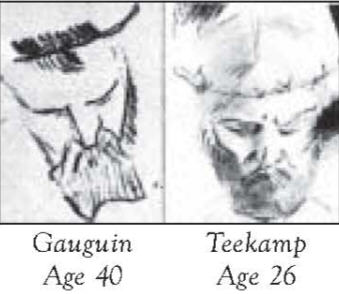
Thousands of cases of children’s past life memories have been documented by various researchers from around the world. Some children are recorded describing their past life residence and recognized family members by name and even successfully passed tests set by the identified family. What is remarkable here is that in most cases, the children appear to have no incentive, financial or otherwise, to make such claims.
Late Dr. Ian Stevenson was the head of the Department of Psychiatric Medicine at the University of Virginia School of Medicine. He devoted forty years to the scientific documentation of past life memories (without hypnosis) of children from all over the world and had over 3,000 cases in his files. In India, Dr. Satwant Pasricha, Head of Dept. of Clinical Psychology, now working in Dept. of Psychiatry, NIMHANS, Bangalore, has investigated and participated in about 500 cases of reincarnation involving children since 1973. She collaborated with Ian Stevenson in reincarnation research beginning in the 1970s. Her books include Can the Mind Survive Beyond Death? In Pursuit of Scientific Evidence (2 Vol.), and Claims of Reincarnation: An Empirical Study of Cases in India. She has also published papers on NDEs.
Hypnosis
Hypnosis, as in “Raaz Pichle Janam Ka”, has been used for decades as a tool for trying to discover past life memories. In the best selling book on this phenomena Many Lives, Many Masters, the author Dr. Brian L. Weiss, a graduate of Yale School of Medicine and chairperson of psychiatry at Mount Sinai Medical center in Miami describes real case studies of his patients.
Although hypnotic regressions claim to offer help in treating childhood phobias and irrational fears, there are skeptics like Dr. Ian Stevenson who urges caution in using them as a proof of past life. Dr. Deepak Gupta, MD, MRCPsych(Member of Royal College of Psychiatrists) and a Consultant Psychiatrist in Bury, UK, is an advanced hypnotherapist. He says, “Like past life regression in hypnosis, we can also ‘progress’ a person in hypnosis and ask what they will be doing in, say, one month or one year’s time. Usually the information they give turns out to be wrong. Secondly, in past life regressions using hypnosis, people always report human births. Therefore, I tend not to use hypnosis as an evidence for reincarnations. There may be some true cases of past life regressions, but I also practise regressions and all the time, I have been able to link it to this life’s fantasies.”
Major religions and reincarnation
Where current scientific understanding about reincarnation is evolving with newer researches in the field, let us turn to mainstream religions and find what insights they have to offer.
Christianity
In the New Testament, Jews are depicted as expecting the reincarnation of their great prophets. In fact, followers of Jesus thought that he was a reincarnated prophet.
Jesus asked his disciples, “Who do the people say that I am?” And they answered, “John the Baptist; but others say, Elijah; and others, that one of the old prophets has risen.” (Luke 9.18-19)
Jesus also stated to his followers that prophet Elijah reincarnated as John the Baptist. (Matthew 17.9-13, 11.11-15)
Many early Christian Church fathers believed in and wrote about reincarnations: St. Justin Martyr (100-165 A.D.) stated that the soul inhabits more than one human body. Origen (185-254 A.D.) who was considered by St. Jerome as the “the greatest teacher of the Church after the Apostles”, defended the idea that soul exists before the body, fundamental to the concept of reincarnation.
However, in the second Council of Constantinople (553 AD), the Roman Emperor named Justinian removed reincarnation from official Church doctrine and excommunicated the Church Father Origen who openly supported the idea of reincarnation.
Judaism
The Jewish historian, Flavius Josephus (37-100 A.D.), wrote that of the three sects of Jews during that era, the Essenes (of Dead Sea Scroll fame) and the Pharisees both believed in reincarnation.
The mystical school of Judaism is called Kabbalah and the teachings are said to have been handed down from teacher to pupil in an unbroken line going all the way back to Abraham. Kabbalists have over the centuries verified reincarnation (or gilgul as it is known in Hebrew), and Zohar, a classic Kabalistic text, mentions reincarnation in details. The Jewish sect called Samarians believed Adam reincarnated as Noah, then as Abraham, then Moses.
Islam
Although mainstream Islam appears to reject reincarnation, there are several references in the Quran that point to reincarnation.
“And you were dead, and He brought you back to life. And He shall cause you to die, and shall bring you back to life, and in the end shall gather you unto Himself.” (2:28)
“How can you make denial of Allah, who made you live again when you died, will make you dead again, and then alive again, until you finally return to Him? (Sura 2, the Cow, Verse 28)
The mystic branch of the religion, the Sufi movement, is very supportive of reincarnation.
Druze
The Druze sect of Lebanon, Palestine (including Israel) and Syria widely believes in reincarnation.
The Red Indians
There is a widespread belief in reincarnation among the native American tribes. The Dakota tribe taught that man reincarnates and in between those lives, he lives with the gods and receives instruction in magic and healing. Many of the Indian medicine men claimed to remember past lives.
Hinduism
Buddhism, Jainism and Hinduism all accept reincarnation. Reincarnation is also there in Pharoaonic Egypt, polytheistic Greece, Rome as well as in Taoism and Zorastrianism.
The main scripture of Hindus, the Bhagavad-gita discusses reincarnation in great detail (2.13-30). It proposes that the basis of consciousness is not the brain or some other organ in the body, but a spiritual spark called the soul. The soul does not die when the body dies, but moves into another body, human, plant, or animal or one of the 84, 00,000 species of life. The soul moves into the next body along with the mind. The mind carries the impressions from previous bodies and acts as a template around which our bones and tissues and the new physical body develops. When the impressions from the past life are very strong on the mind, it influences the new physical body to grow with characteristic facial features, birth marks or defects as in the case of Lilliput, mentioned at the beginning of the article.
In Chapter 15 of Bhagavad-gita, this is described as follows:
Bg 15.8 – The living entity in the material world carries his different conceptions of life from one body to another as the air carries aromas. Thus he takes one kind of body and again quits it to take another.
Bg 15.9 – The living entity, thus taking another gross body, obtains a certain type of ear, eye, tongue, nose and sense of touch, which are grouped about the mind. He thus enjoys a particular set of sense
objects.
The Vedic text Srimad-Bhagavatam traces the reincarnation case of King Bharat in three lives as a king, deer, and again a human. (Canto 5, Ch. 8)
Use of Belief in Reincarnation and Karma
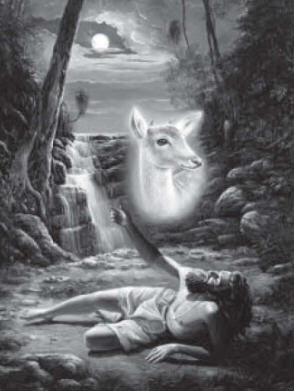
A belief in reincarnation and leading a life based on it offers personal growth and solution to major sociolo-political problems of the world.
Reincarnation means that we can change species, race, religion, gender, and religious affiliation from lifetime to lifetime. Once people realize that religious, ethnic, and national affiliation constitutes a temporary belief system, that one can be a Hindu in one lifetime and a Muslim or Pakistani in another, then conflicts based on these affiliations will be seen as self-defeating. There would be less incentive to fight. If Germans knew that a person could be born Jew in one lifetime and Christian in another, then the Holocaust causing murder of six million Jews could never have happened.
When we know that reincarnation and karma are real, then we will accept responsibility for our actions, avoid violence and practice tolerance and compassion as everything we do, we know, will come back to us. It will give hope to those caught up in unfortunate circumstances making them realize that although their past actions are causing the current misery, still they have the power to change their future. We will be more conscious of environment and not focus on immediate gain, but instead on long-term benefit for the future generations. Relationships will improve, as we understand that our bitterest enemy may simply be giving us the bad karma we had offered him in the past, and the current situation may be an opportunity to understand him and resolve the conflict. We will no longer try to dominate but use our energies to build a harmonious planet.
As Dr. Jeffrey Long adds, “I’m a physician who fights cancer. In spite of our best efforts, not everybody is going to be cured. My absolute understanding that there is an afterlife for all of us and a wonderful afterlife helps me face cancer, this terribly frightening and threatening disease, with more courage than I’ve ever faced it with before. I can be a better physician for my patients.” (TIME, 22 Jan 2010)
what is the future?
Still, the Vedas invite us to do more than just create a better world. They ask us to invest for a better tomorrow. The Gita explains that by our desires we lay the foundation of our next body. “Whatever state of being one remembers when he quits his present body, in his next life he will attain to that state without fail.” (Bg. 8.6). Although we change our bodies, families, planets, nevertheless, all this cosmic hopping, enjoying and suffering has nothing to do with the real person, the spirit soul.
For the spirit, enjoying this world is like a fish trying to enjoy in a dry desert. Spirit desires to encounter the essence, it longs to connect and align to a greater energy the Supreme Spirit, God its creator and father and. The spirit longs for eternal residence in His abode. In that union it will find the peace and joy it searches for and tries to substitute by the ephemeral pleasures of this world.
The Vedic scriptures offer elaborate details about God, His abode, and the path to achieve them. As Gita sates: “…but there is a world beyond, the world of God, and one who attains it, never takes birth again.” (Bg. 8.16). That is the place where the completely evolved spirit, free from the indulgence of this world engages in a relationship of loving service to the Supreme and is fully delighted, enlightened, and eternal.
To go there we have to adopt a life centred around the principles of love and devotion to the Supreme, so that when death comes, it will not be an entry into an incessant loop of species-hopping, but a final leap in to the spiritual world, with a sure opportunity to have a personal relationship with a loving God.
Ref:
* Kenneth Ring and Sharon Cooper, MINDSIGHT: Near-Death and out of body experiences in the Blind (Palo Alto,Califoria: William James Center for Consciousness Studies, 1999).
* Searching for Vedic India, by Devamrita Swami
* Born Again by Walter Simkiw, MD. Ritana books
* Origin of Soul by Walter Simkiw, MD. Ritana books
* Human Devolution by Michael A. Cremo
Reincarnation Birth Marks
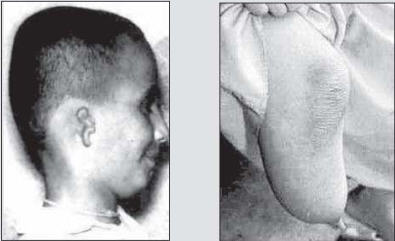
Dr Ian Stevenson covered birthmarks and birthdefects in his book Where Biology and Reincarnation Intersect.
About 35% of children who claim to remember previous lives have birthmarks and/or birth defects that they attribute to wounds on a person whose life the child remembers. 210 such children were investigated. In 43 of 49 cases in which a medical document (usually a postmortem report) was obtained, it confirmed the correspondence between wounds and birthmarks (or birth defects). Stevenson added: “It seems to me that the imprint of wounds on the previous personality must be carried between lives on some kind of an extended body which in turn acts as template for the production on a new physical body of birthmarks and deformities that correspond to the wounds on the body of the previous personality.”
Why don’t we remember past lives?
Life is tough enough dealing with hurt incurred this time around. Remembering all the trauma and grievances associated with past lives and deaths would paralyze us with fear and phobias. Nor would we establish relationships with those with whom we have karmic issues and lessons. Without contributing to enhance the quality of our present life, the haunting past will only complicate our every day choices, actions and create volatile opinions. Mercifully, God spares us the pain.
Reincarnation cases involving political legends and film stars of India
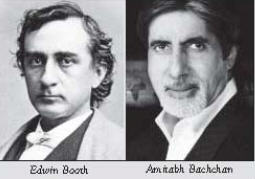
These matches were derived through the work of Walter Simkiw, M.D., and Kevin Ryerson and are mentioned in Born Again. Kevin is a trance channel, which means that when he works, he goes in to a meditative state or trance and allows spirit beings to speak through him. The spirit guide that Kevin channels is Ahtun Re, who has demonstrated an ability to make what appears to be accurate past life matches. Such paranormal features may appear strange to a scientific mind, but there are many examples of paranormal features being scientifically studied and reported.
Human Devolution by Michael A. Cremo, offers numerous examples of scientists who witnessed and attested to paranormal phenomenon. Some of them are Sir William Crookes, a Noble laureate in physics and a president of the Royal Society, Marie Curie and her husband Pierre Curie, and Dr John G. Taylor, a mathematical physicist at the University of London, who studied Uri Geller, a medium famous for his ability to bend and move metal in ways that seemed impossible in light of ordinary physics.
BTG does not confirm or refute the following claims, but is only reporting them.
Simkiw proposes the following matches:
APJ Abdul Kalam, former President of India and often considered the “Missile Man,” is reincarnation of Tipu Sultan, who had pioneered rocket technology for military use. Vikrama Sarabhai, the mentor of Kalam, was reincarnation of Haider Ali, the father of Tipu Sultan.
Amitabh Bachchan is the reincarnation of Edwin Booth (1833-1893), an American who was considered one of the finest Shakespearian actors of Victorian times. Bachchan has been described as a gifted actor in a Shakespearian way.
Edwin Booth met Mary McVickers when he performed in a theatre that her father owned. Edwin and Mary played the leads in “Romeo and Juliet,” fell in love and later married. Mary has reincarnated as Jaya Bachchan.
Edwin Booth’s first wife was Mary Devlin, an actress who met him, when they were cast in the lead roles of “Romeo and Juliet.” Mary Devlin died two years after they were married. She has reincarnated as Rekha who has played leading lady in many of Amitabh’s movies.
